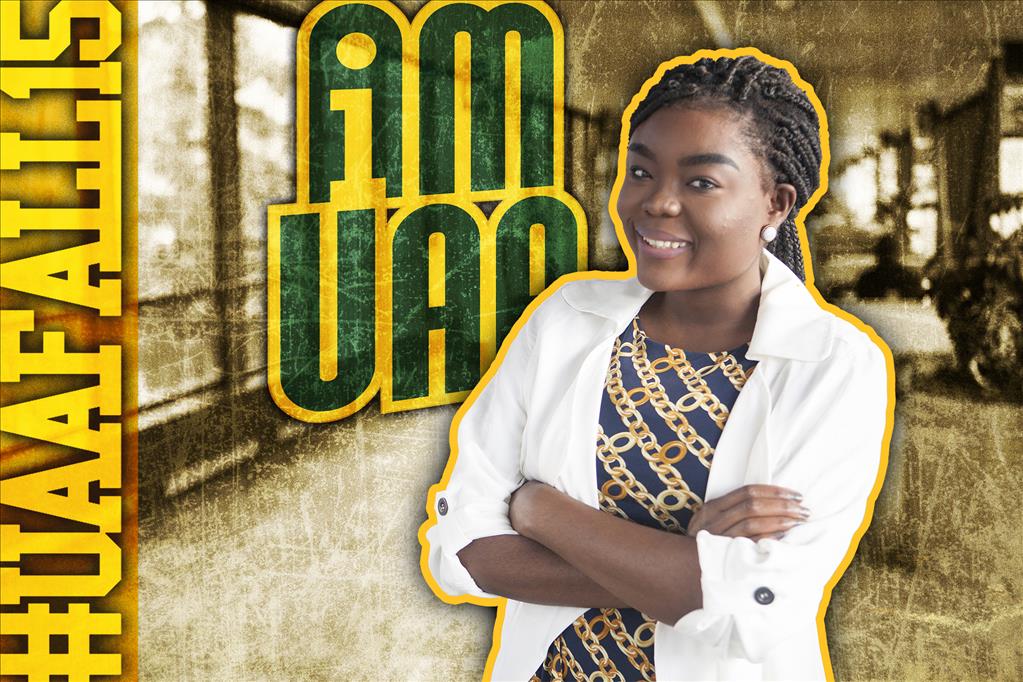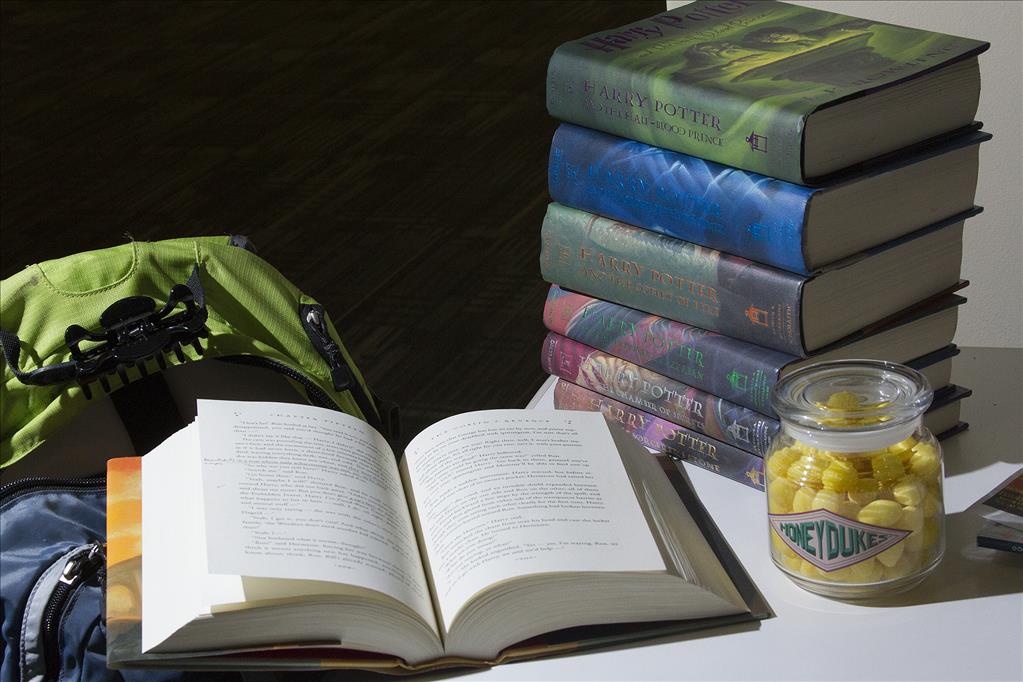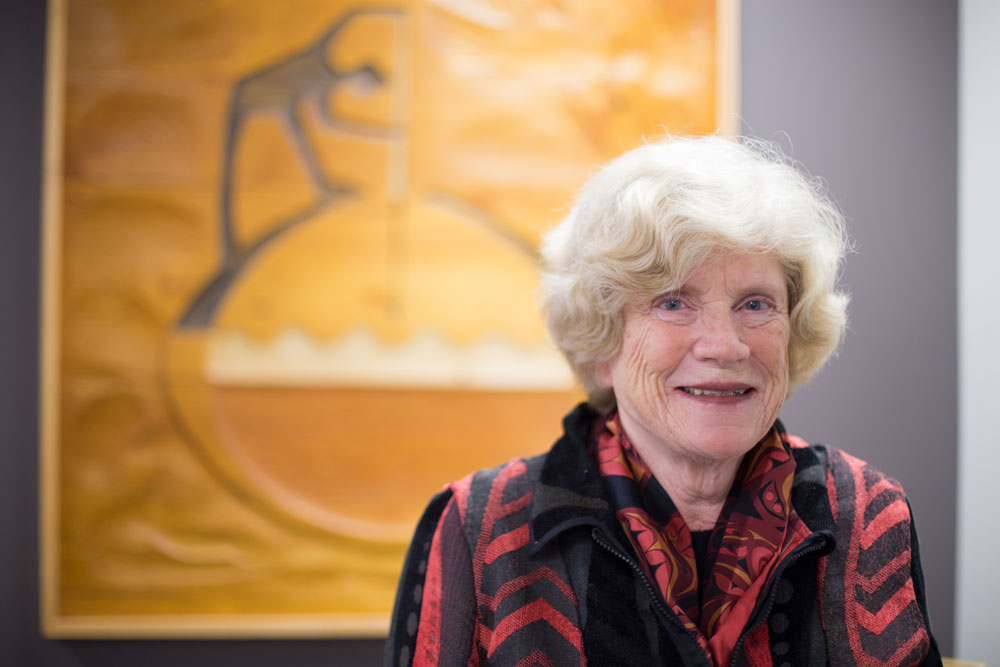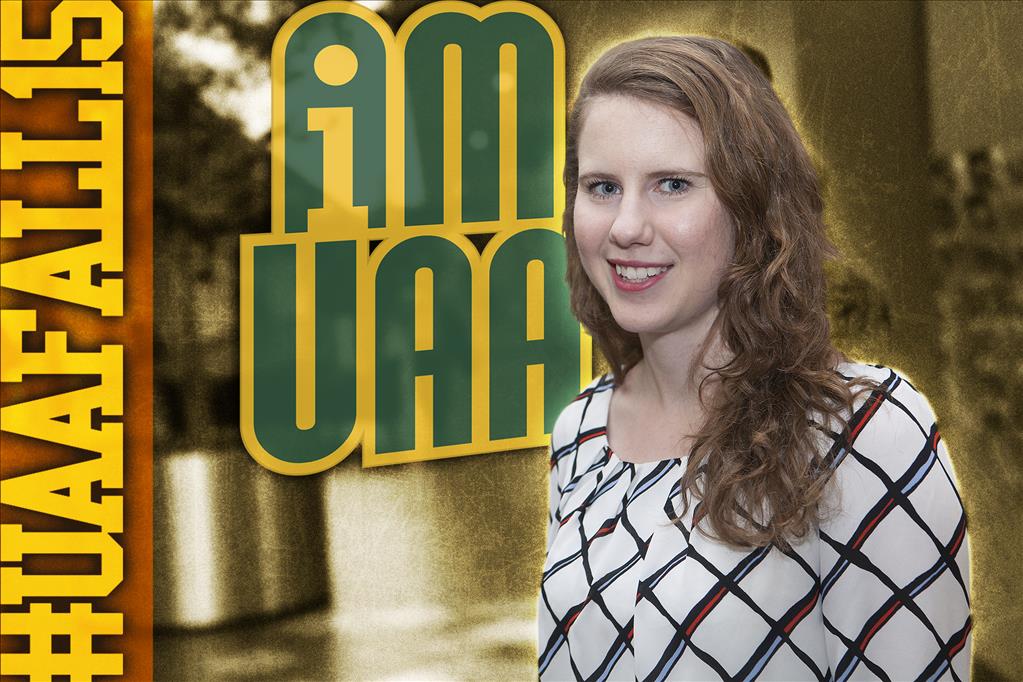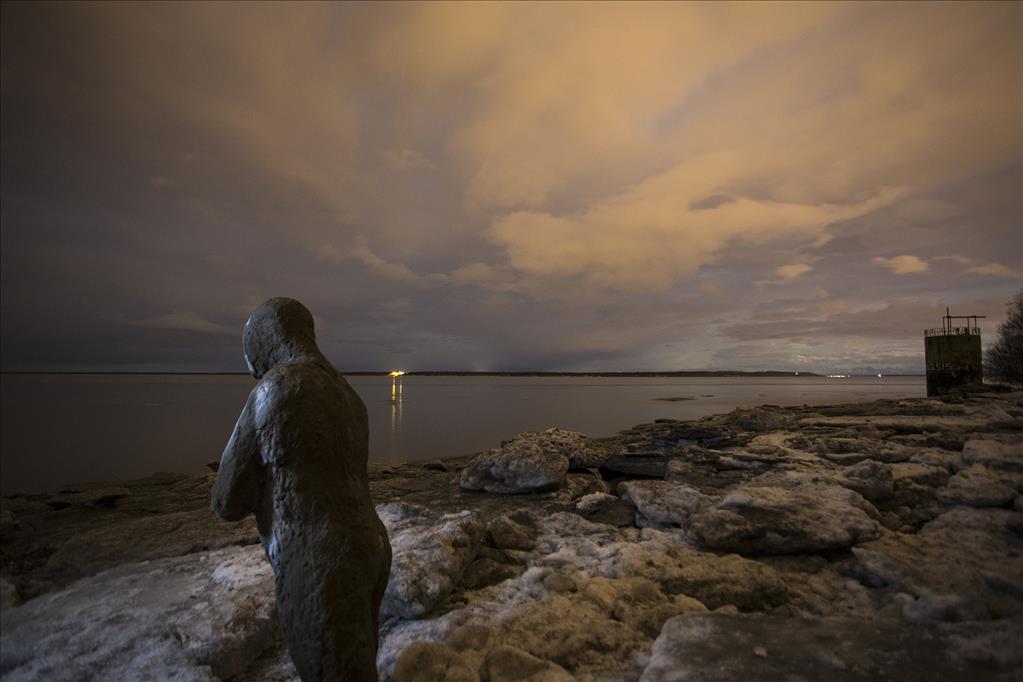Learning what keeps us aloft when we fly
by Tracy Kalytiak |

Shelby Mattingly watches as her lab partner, Brooke Dittlinger, uses a wind tunnel during UAA's wing aerodynamics summer engineering academy last week. (Photo by Tracy Kalytiak/UAA)
Middle school-age kids clustered around a machine at UAA's new Engineering & Industry Building, peering at a tiny model of a plane perched inside a clear chamber. A mist unfurled from a wand held up to a screen on the side of the Hampden wind tunnel, and streamed smoothly around the plane as the kids' instructor asked questions.

Students discover wing aerodynamics in Dr. Jifeng Peng's class during this year's UAA summer engineering academies. (Photo by Theodore Kincaid/UAA)
"You want to try an even larger angle of attack?" UAA's Dr. Jifeng Peng said, pressing buttons on a control pad of the $18,000 wind tunnel during his summer engineering academy course on wing aerodynamics last week. The miniature plane tilted to a steeper angle and the mist's movement appeared choppy. "Now you can see the [mist], visualize the air flow, right?"
"It's going over," a boy said. "It's not going under, though," said another student. "Can somebody tell me the difference between the air flow now and the air flow before?" Peng asked. "It's going to stall," a girl said. "Yes, it's going to stall," Peng said. "You can see the air becomes unsteady off the wing, so it's become circular." He gestured toward a gap in the mist. "That's basically the flow separation over there. Before, the air moved around the airfoil very nicely, very smoothly. The air does not stay on the wing anymore."
Peng's academy on wing aerodynamics is the newest offering in UAA's Summer Engineering Academies, which Dr. Scott Hamel has directed since 2010.
UAA faculty devised the 8 a.m. to 3 p.m. weekday sessions, which give students a sampling of programs in UAA's College of Engineering-including civil engineering, geomatics, electrical engineering, mechanical engineering and computer science. The sessions concluded Friday. In addition to wing aerodynamics, the courses included advanced structures, structure destruction (bridge engineering), robotics, creative coding and alternative energy. Peng's course focused on kids in grades 6-8, but other courses were available for kids in grades 9-12.
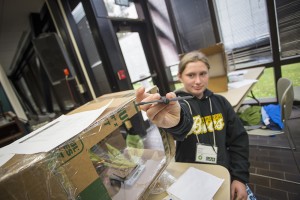
Shelby Mattingly displays a wind tunnel she made during UAA's summer engineering academy on wing aerodynamics. (Photo by Theodore Kincaid/UAA)
A lottery determined with students filled the 440 spots in the BP-sponsored academies. The cost to parents was $100 for most of the academies and $200 for the advanced robotics and structures sessions.
"Our purpose is exposure," Hamel said earlier this summer. "It's our job to take kids who haven't been exposed to science and engineering and say, 'Hey, here's engineering. It's fun!' That's our primary objective."
The kids participating in Peng's wing aerodynamics session first learned the basics about wind tunnels when they fashioned their own.
Box fans directed air into a cardboard-and-clear-tape intake, through a flow generator consisting of a honeycomb of glued-together plastic straws and into a test chamber with a clear plastic viewing window. They used the wind tunnels to experiment with airfoils and plane models they made themselves, attaching their planes and airfoils to small scales to measure lift.

A student in the summer engineering academy's wing aerodynamics class shows a plane model she is about to test in UAA's wind tunnel, at the new Engineering & Industry Building. (Photo by Theodore Kincaid/UAA)
Computers helped them shape airfoils; a 3-D printer made them real.
Shelby Mattingly, Rosie Jines and Brooke Dittlinger, 11, worked together on their wind tunnel project, at the Student Union.
What will it be like the next time they board a plane, knowing more about how a plane's wings and their shape make it possible to fly?
"I learned about the lift and the thrust and drag and how the air moves over the wings," Brooke said.
"Over and under the wings to make them go up and down," Shelby continued. "And how the thrust goes against the drag and the lift goes against gravity."
"It will be interesting thinking about it," Brooke said.
Written by Tracy Kalytiak, UAA Office of University Advancement.
 "Learning what keeps us aloft when we fly" is licensed under a Creative Commons Attribution-NonCommercial 4.0 International License.
"Learning what keeps us aloft when we fly" is licensed under a Creative Commons Attribution-NonCommercial 4.0 International License.










